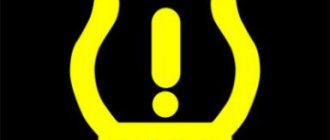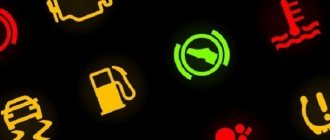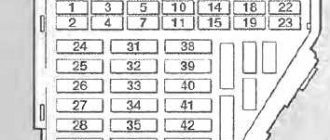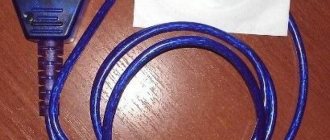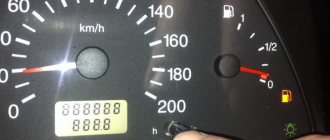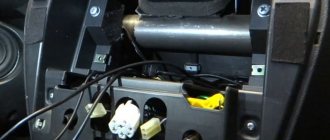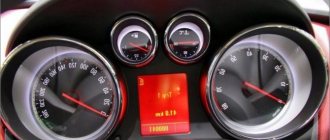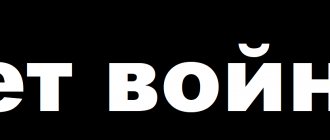The marking of headlights can give a lot of information to the car owner, for example, about the type of lamps that can be installed in them, their category, the country where official permission was issued for the production of such headlights, the type of light emitted by them, illumination (in lux), direction of movement and even release date. The last element is very interesting in the context that using this information you can check the real age when buying a used car. Individual manufacturers of car headlights (for example, KOITO or HELLA) have their own designations, which are useful to know when purchasing them or buying a car. The following material provides information about a variety of markings for LED, xenon and halogen headlights.
- International approval mark. In this case, approved in Germany.
- The letter A means that the headlight is a front light or a side light.
- The combination of HR symbols means that if a halogen lamp is installed in the headlight, it will only be for high beam.
- The DCR symbols mean that if the lamp is equipped with xenon lamps, they can be designed for both low and high beam.
- The so-called leading fundamental number (GN). Values of 12.5 and 17.5 correspond to a low high beam intensity.
- The arrows indicate that the headlight can be used on cars designed to drive on roads with right- and left-hand traffic.
- The PL symbols inform the car owner that a plastic lens is installed on the headlight.
- The IA symbol in this case means that the headlight has a reflector for motor vehicles.
- The numbers above the arrows indicate the percentage of angle at which the low beam should be scattered. This is done to make it easier to adjust the luminous flux of the headlights.
- The so-called official approval. It indicates the standards to which the headlight meets. The numbers indicate the homologation (update) number. Each manufacturer has its own standards and also complies with international ones.
Headlight markings by category
A marking is a clear, indestructible symbol of international approval, where you can find information about the country that gave the approval, the category of the headlight, its number, the type of lamps that can be installed in it, and so on. Another name for marking is homologation, a term used in professional circles. As a rule, markings are applied to the lens and headlight housing. If the lens and headlight are not included in the kit, then the corresponding markings are applied to its protective glass.
Now let's move directly to the description of the types of headlights. So, they come in three types:
- headlights for traditional incandescent lamps (nowadays they are becoming increasingly rare);
- headlights with halogen lamps;
- headlights for xenon bulbs (aka gas discharge lamps/headlights);
- diode headlights (another name is ice headlights).
Incandescent lamps . The letter C indicates that they are intended for low beam, the letter R means high beam, the combination of letters CR means the lamp can emit both low and high beam, the combination C/R means that the lamp can emit either low or high beam (Rules UNECE No. 112, GOST R 41.112-2005).
Halogen lamps . The combination of letters HC means that it is a low beam lamp, the combination HR means that it is a lamp for high beam, the combination HCR means that the lamp is both low and high beam, and the combination HC/R is a lamp for either low beam or high beam (UNECE Regulation No. 112, GOST R 41.112-2005).
Xenon (gas discharge) lamps . The combination of letters DC means that the lamp is designed to emit low beam, the combination DR means that the lamp emits high beam, the combination DCR means that the lamp is both low and high beam, and the combination DC/R means that the lamp is either low or high beam (Rules UNECE No. 98, GOST R 41.98-99).
The HCHR marking on Japanese cars means HID C Halogen R, that is, low beam xenon, high beam halogen.
Since October 23, 2010, it is officially permitted to install xenon headlights on a car. However, it is necessary to have a headlight washer and auto-corrector. At the same time, it is desirable that employees of state traffic police agencies make appropriate notes about the features introduced into the design of the vehicle in the “special notes” column of the STS/PTS.
The best lamps for cars
Find out which bulbs to install in your car's headlights. Ratings are given for popular lamps in h1, h4 and h7 sockets. The lists are compiled based on measurements of the physical indicators of lamps and their characteristics Read more
How to decipher LED
Licensed equipment intended for LED lamps is marked HCR in the code. In addition, all lenses and reflectors in car headlights have an embossed LED symbol.
The design of headlights for diodes differs from blocks for halogen lamps in the material of manufacture. Diodes have a minimum heating temperature compared to halogen ones, and if LEDs can be equipped with a headlight designed for xenon and halogen, then reinstallation is not recommended, because halogen lamps have a high heating temperature.
In addition to letters and numbers, the car headlight markings contain the brand logo. This can be either a trademark or the familiar combination “Made in …”.
Daytime running lights are not yet marked. The use of lamps of a certain power and class is regulated in traffic regulations.
International approval marks
All licensed lamps installed in modern cars have certain certification. The most common standards are the following: the letter “E” corresponds to the European standard, the abbreviation DOT (Department Of Transport - Department of Transport of the United States of America) is the first American standard, the combination SAE (Society Of Automotive Engineers) is another standard according to which , including motor oils.
When marking headlights, just like when marking lamps, a specific number is used to designate countries. The relevant information is summarized in a table.
| Number | The name of the country | Number | The name of the country | Number | The name of the country |
| 1 | Germany | 13 | Luxembourg | 25 | Croatia |
| 2 | France | 14 | Switzerland | 26 | Slovenia |
| 3 | Italy | 15 | not assigned | 27 | Slovakia |
| 4 | Netherlands | 16 | Norway | 28 | Belarus |
| 5 | Sweden | 17 | Finland | 29 | Estonia |
| 6 | Belgium | 18 | Denmark | 30 | not assigned |
| 7 | Hungary | 19 | Romania | 31 | Bosnia and Herzegovina |
| 8 | Czech Republic | 20 | Poland | 32…36 | not assigned |
| 9 | Spain | 21 | Portugal | 37 | Türkiye |
| 10 | Yugoslavia | 22 | Russian Federation | 38-39 | not assigned |
| 11 | Great Britain | 23 | Greece | 40 | Republic of Macedonia |
| 12 | Austria | 24 | not assigned | — | — |
Most headlights also have the logo of the manufacturer or brand under whose sign this or that product was produced. Similarly, the location of the manufacturer is indicated (often this is simply the country where the headlight was manufactured, for example, Made in Taiwan), as well as the quality standard (this can be either an international standard, for example, ISO, or internal quality standards of that or other specific manufacturer).
Tail lights
In addition to high-quality headlights for your car, you can also order taillights from the Forward Parts online store. There are several options for rear lights at your disposal, which will surprise you with their functionality from the first minutes of their use.
In the optics catalog we have tried to collect all possible headlight options for you. If you can’t make a choice, our consultants are always happy to help you. The Forward Parts online store is your first assistant in creating a unique and functional car!
Type of light emitted
Typically, information about the type of light emitted is indicated somewhere in the immediate vicinity of the circled symbol. So, in addition to the above types of radiation (halogen, xenon, LED), there are also the following designations:
- Letter L. This designates the light sources for the rear license plate of a car.
- The letter A (sometimes combined with the letter D, which means that the homologation refers to a pair of headlights). The designation corresponds to front marker lamps or side lamps.
- The letter R (similarly, sometimes in combination with the letter D). This is the designation for the rear parking light.
- Combinations of characters S1, S2, S3 (similarly, with the letter D). This is how brake lights are designated.
- Letter B. This is how the front fog lights are designated (in Russian designation - PTF).
- Letter F. The designation corresponds to the rear fog lamp, which is mounted on cars, as well as towbars.
- Letter S. The designation corresponds to an all-glass headlamp.
- Designation of the front turn signal 1, 1B, 5 - side, 2a - rear (they emit orange light).
- Turn signals also come in a transparent color (white light), but they shine orange due to the orange lamps inside.
- AR symbol combination. This is how reversing lights installed on cars and trailers are marked.
- Letters RL. This is how fluorescent lamps are marked.
- Combination of letters PL. These symbols correspond to headlights with plastic lenses.
- 02A - this is how the sidelight (size) is designated.
It is interesting that cars intended for the North American market (United States of America, Canada) do not have the same designations as European ones, but they do have their own. For example, turn signals on American cars are usually red (although there are others). The symbol combinations IA, IIIA, IB, IIIB are reflectors. Symbol I corresponds to reflectors for motor vehicles, symbol III corresponds to towed devices, and symbol B corresponds to built-in headlights.
According to the rules, side marker lights must be installed on American cars longer than 6 meters. They are orange in color and designated SM1 and SM2 (for passenger cars). The rear lights emit a red light. On trailers it is necessary to install a triangular reflector, designated IIIA, and contour lights.
Often the information plate also contains information about the initial angle of inclination at which the low beam should be scattered. Most often it is within 1...1.5%. In this case, there must be a tilt angle corrector, since with different loads of the car, the angle of illumination of the headlights also changes (roughly speaking, when the rear of the car is heavily loaded, the main luminous flux from the headlights is directed not at the road, but directly in front of the car and even slightly upward ). In modern cars, as a rule, this is an electronic corrector, and they allow you to change the corresponding angle directly from the driver’s seat while driving. In older cars, this angle must be adjusted directly in the headlight.
Some headlights indicate the SAE or DOT standard number (European and American automaker standards).
General information
If the headlights are not designed for xenon, then it will not be possible to install this type of lamp in them, since this is fraught with violation of the law and the issuance of a report from the traffic police inspector.
In addition, failure to comply with labeling requirements can lead to poor lighting quality, because headlights not intended for this purpose cannot ensure the normal operation of xenon and the concentration of the light emitted by it, which is necessary for the effective use of such lighting devices.
Marking is the designation of headlight features, expressed in letters and numbers, which tell the consumer what can be mounted in this optics so that it performs its tasks as efficiently as possible, without interfering with other motorists.
Marking is useful for craftsmen who immediately understand which lamps can be used in it and which additional devices may well be used to ensure operability.
Initial data
Different countries may have different labels that look the same but carry different information.
For example, in Japan the HC/HR marking is used - the same as in European cars, but if in an Asian country this means the headlight is suitable for xenon in low and high range modes, then in European cars such a designation will be a complete ban on xenon lamps and their intended purpose headlights are strictly for halogen lamps.
Therefore, if the car is Japanese, but is used in European countries, in particular in Russia, then you need to have with you certain documents explaining the meaning of the marking.
You should not ignore the markings on the headlights, because if its requirements are violated, you may not only not get high-quality light, but also dazzle other drivers, which is not only unpleasant, but also dangerous, since it creates an emergency situation and can provoke a real tragedy.
Their design
The glow of a headlight is created thanks to several specific elements, the most important of which is the light source itself in the form of a lamp, which shines in all directions, directing particles around itself.
The task of collecting light into a beam is taken care of by a reflector, which receives all the rays and directs them in a certain direction, amplifying them many times over.
At the same time, there is also a corrector for the xenon headlight, which limits the light zone, directing the beam forward.
There is also a difference in a xenon headlight, which is the actual absence of a diffuser; there is glass, but it is polished and does not have the functions that are needed, for example, for halogen or incandescent lamps, the light of which must be diffused for normal illumination.
The xenon lamps themselves are made in the form of a flask containing two electrodes, and its internal space itself is filled with a noble inert gas - xenon.
We recommend: Replacing hydraulic compressors on a 16-valve VAZ-2112 with your own hands
When the light bulbs are turned on, the ignition unit, which is located separately from the light bulb, is triggered and produces a voltage of 25 thousand volts through the wires, which enters the flask, and at the same time the gas begins to glow, and its light is directed in the desired direction using a corrector.
The legislative framework
Regarding xenon and compliance with labeling, there are Rules for the operation of vehicles, which regulate that the vehicle must use exactly those devices that are structurally provided for in it.
The same applies to individual technical elements, including headlights. Thus, when a headlight that is not intended for xenon and does not have the appropriate marking contains a xenon lamp, this is a violation of established standards.
But the 2022 law does not stipulate xenon marking on headlights, since this has not been adopted.
But a person who was noticed operating a car in which the lighting devices do not correspond to the markings or they were even replaced without coordination with the technical authorities of the traffic police risks being punished.
This is evidenced by the Code of Administrative Offenses of the Russian Federation and its Article 12.5, which even provides for deprivation of rights if the presence of light bulbs not intended for this device is proven by technical experts.
Illuminance value
All headlights have a symbol indicating the maximum luminous intensity (in lux) that a headlight or pair of headlights can produce. This value is called the leading base number (abbreviated as leading base number). Accordingly, the higher the VOC value, the more intense the light emitted by the headlights and the greater the range of its propagation. Please note that this marking is only relevant for headlights that have both low and high beams.
In accordance with current standards and regulations, all modern manufacturers are not allowed to produce headlights with a leading base number value exceeding 50 (corresponding to 150 thousand candelas, cd). As for the total total light intensity emitted by all headlights installed on the front of the car, it should not exceed a VOC equal to 75, or 225 thousand candelas. Exceptions include headlights for special equipment and/or closed sections of roads, as well as sections significantly removed from sections of the road used by ordinary (civilian) transport.
Xenon and the law
The issue of labeling needs to be looked at from the other side. Let’s say a person is stopped at a traffic police post, but the inspector is not aware of the designation of certain markings and issues a fine because they do not comply with GOST. What to do in this case? We will consider the issue of converting headlights to xenon below, but for now let’s consider the situation described.
In defense, you can show all the special documents that contain the marking data of the headlights. Any lamps for optics will have the same markings as headlights. It should be noted that the markings on car windows must also match the data indicated on the lamps. However, after this the inspector will not calm down, but will continue to issue a fine. Why? Marking headlights for KIA xenon is a rather complicated issue, so many people get caught using them illegally.
The fact is that the traffic police has a different system of standards, according to which a fine is issued in such a situation. Unfortunately, there is a document that regulates the installation of various optical devices on the machine. And the same document prohibits the use of certain parts, in this case optical instruments, in abnormal modes. This is exactly what the traffic police officer will issue a fine for.
This is interesting: What kind of oil and how to fill it in the power steering: useful tips and recommendations
In this case, the driver will think, why then are these light bulbs being sold? The answer is simple. This system must only be installed in suitable headlights. If the optics in a car are created with an emphasis on the use of halogen lamps, then no matter what the xenon label is, in any case their use is considered illegal. If there is a D symbol on the glass, then you can safely install xenon light. In this case, no one has the right to issue a fine, because the designation of the headlight is xenon, not halogen.
If you really want to use this type of optical system, but the car is not provided, then there is only one piece of advice. It is necessary to replace all the optics that are in the car with xenon ones. If such equipment is already available for a certain brand of car, then you can safely change the entire system. However, you need to understand that not all cars have a similar set.
Direction of movement
This marking is relevant for cars with right-hand drive, that is, for those that were originally intended for driving on roads with left-hand traffic. This function is marked with arrows. So, if in the symbol on the headlight there is an arrow pointing to the left, then, accordingly, the headlight should be installed in a car designed to drive on roads with left-hand traffic. If there are two such arrows (directed both to the right and to the left), then such headlights can be installed on cars for roads with both left-hand and right-hand traffic. True, in this case additional adjustment of the headlights is necessary.
However, in most cases, the arrows are simply missing, which means that the headlight must be installed on a car designed to drive on right-hand drive roads. The absence of an arrow is due to the fact that there are more right-hand traffic roads in the world than left-hand ones, and the same applies to the corresponding cars.
Violations
Car owners are required and required to strictly adhere to factory markings and avoid any combination of incompatible items.
For example, if a car owner decides to install xenon equipment in conventional headlights without the DR, DC and DCR markings on them, this could be a threat to road safety.
Until September 23, 2010, when the technical regulations were adopted, non-compliance of headlights and light bulbs provided for an administrative violation in which the car owner could be deprived of his driver’s license from six months to a year, and the lighting equipment was confiscated.
A little later, changes were made that allowed the use of headlights without appropriate markings for xenon and halogen, but with mandatory equipment such as headlight washers and automatic headlight angle correction.
Failure to match the markings with the installed headlights is considered non-compliance with traffic rules and is punishable by the legislation of the Russian Federation.
If halogen or xenon lamps are installed in headlights designed for conventional (incandescent) light bulbs, the operation of individual vehicle devices may be disrupted.
The administrative punishment provided for this violation is regulated in the resolution of the Supreme Court of the Russian Federation dated December 15, 2009, number 11 AF09-1246.
An administrative case is initiated on the basis of Part 1 of Article 12.4 of the Code of Administrative Offences. It turns out that the use of vehicles with such violations is prohibited by law.
Official approval
Many (but not all) headlights contain information about the standards to which the product meets. Moreover, this depends on the specific manufacturer. As a rule, information about standardization is located under the symbol within the circle. Usually information is stored in a combination of several numbers. The first two of them are the modifications that this headlight model has undergone (if any, otherwise the first digits will be two zeros). The remaining numbers are the individual homologation number.
Homologation is an improvement of an object, improvement of technical characteristics in order to comply with any standards or requirements of the consumer country of the product, obtaining approval from an official organization. Homologation has very rough synonyms “accreditation” and “certification”.
Many car enthusiasts are interested in the question of where exactly they can look up information about the labeling of new or already installed headlights on their car. Most often, the relevant information is applied to the upper part of the headlight housing, in particular, under the hood. Another option is that the information is printed on the inside of the headlight glass. Unfortunately, for some headlights the information cannot be read without first removing the headlights from their mounting location. This depends on the specific car model.
Installation Features
In order to install a restyling on your Ford Focus, you need to stock up on a set of tools. You will need:
- Directly headlights.
- Screwdriver with star tip.
- Round file for boring holes.
- Small minus screwdriver.
- Drill with a set of drills (it is important that there is at least one thick drill to create space for the wires).
- Self-tapping screws for fixing the ignition unit on the optics.
So, first of all, you need to remove the headlights. To do this, open the hood and remove the mounting bolt. Then we remove the latches that hold them and remove the headlights. In this case, all wires and terminals must be disconnected. Some are easy to remove by hand as they are secured with regular latches, while others may require the use of a screwdriver.
After the headlights are removed, you need to open the 4 latches and disconnect the terminal, which will allow you to remove the old lamp. Next you will need to make a hole for the wiring using a drill. You need to drill as low as possible on the cover so that the wires lay correctly and do not rest against the plastic wall. Otherwise, the optics will have to be further modified.
Once the wiring is finished and routed through the hole, you need to install the rubber band in the created hole and set the cover aside. Now it's time to work with the ignition unit. It can be installed either under the headlight or in any other place, since there is enough space under the hood. It is better to mount it from below, since there are special places for self-tapping screws. The main nuance here is that the supplied block should not interfere with the installation of the headlight. If everything worked out for you, move on to the next stage.
We take the cover on which the wires are fixed (two go to the optics, and two have terminals at the end) and a lamp. The wires must be connected to the terminals from the old lamp. It is extremely important not to confuse anything with the polarity here, because if you connect the wiring incorrectly, nothing will work. On an old headlight, the brown wire is negative, and the white wire is positive. Xenon outputs a plus on the red wire and a minus on the black. It may also be that your headlights will come with different wiring: black is positive, blue is negative. After everything is connected, you need to install the lamp in place and secure it with special latches without pinching the wires. Next, you need to connect the terminals to the ignition unit. That's all, we do the same for the second headlight - xenon is installed on your Ford Focus restyling.
Xenon headlight markings
In recent years, xenon headlights have become very popular among domestic car enthusiasts. They have a number of advantages over classic halogen light sources. They have a different type of base - D2R (the so-called reflector) or D2S (the so-called spotlight), and a glow temperature below 5000 K (the number 2 in the designation corresponds to the second generation of lamps, and the number 1, respectively, to the first, but they are currently found infrequently for obvious reasons). Please note that the installation of xenon headlights must be carried out correctly, that is, in accordance with current rules and regulations. Therefore, it is better to install xenon headlights in a specialized auto repair shop.
The following are specific designations for halogen headlights, with the help of which it is possible to determine whether xenon light can be installed instead:
- DC/DR. This headlight has separate low and high beam sources. Moreover, such designations can also occur on gas-discharge lamps. Accordingly, instead of them you can put “xenon lights”, but in accordance with the rules mentioned above.
- DC/HR. Such headlights are designed to install gas-discharge lamps for low-beam lighting. Accordingly, such lamps cannot be installed on other types of headlights.
- HC/HR. This marking is installed on the headlights of Japanese cars. It means that instead of halogen headlights, xenon ones can be mounted on them. If a similar inscription is on a European or American car, then the installation of xenon headlights on them is prohibited! Accordingly, only halogen headlights can be used for them. Moreover, this applies to both low and high beam lamps.
Sometimes numbers are written before the characters mentioned above (for example, 04). This number indicates that changes have been made to the documentation and design of the headlights in accordance with the requirements of the UNECE Regulations with the number indicated before the mentioned symbols.
As for the places where information about the headlight is printed, xenon light sources can have three of them:
- directly on the glass from its inside;
- on top of the headlight cover, made of glass or plastic; to study the relevant information, it is usually necessary to open the hood of the car;
- on the back of the glass cover.
Xenon lamps have a number of individual designations. Among them are several English letters:
- A - lateral;
- B - anti-fog;
- C — low beam;
- R - high beam;
- C/R (CR) - for use in headlights as sources of both low and high beam.
Sticker for xenon headlights
Samples of various stickers
Recently, among car enthusiasts whose cars are equipped with xenon headlights not from the factory, but during operation, the topic of making headlight stickers on their own is gaining popularity. In particular, this is true for xenon lenses that have been altered, that is, normal xenon lenses have been replaced or installed (for optics without changes, the corresponding sticker is made by the manufacturer of the headlight or car).
When making stickers for xenon headlights yourself, you must know the following parameters:
- What kind of lenses were installed - bilens or regular mono.
- The bulbs used in the headlight are for low beam, high beam, turn signal, running lights, type of base, and so on. Please note that for Chinese Plug-n-play lenses, you cannot indicate the Chinese lens and halogen base (type H1, H4 and others) on the sticker. Also, when installing them, it is necessary to hide their wiring, since by their appearance (installation) you can easily identify such devices, and get into trouble when checked by employees of the State Road Service.
- Geometric dimensions of the sticker. It must fit completely on the headlight housing and provide complete information when looking at it.
- Manufacturer of headlights (there are a lot of them nowadays).
- Additional information, such as the production date of the headlights.
General points
A feature of headlights with lenses is that the flow of light is “cut”, due to which the direction is adjusted. The rays pass only along the horizon and are not transmitted vertically.
The design of headlights with lenses consists of separate blocks. This:
- headlight itself;
- reflector;
- xenon lamp.
The lens is used to focus a beam of light directly onto the road, and this is its main function. Vehicle registration certificate? Using headlights without lenses is considered illegal.
To ensure that the beam of light is cut strictly vertically, special magnetic “curtains” are used. It is possible to install automatic headlight adjustment.
Initial data
Drivers resort to such tricks in order to improve the appearance of the car and its performance, or to achieve high-quality lighting.
Pros of using lensed headlights:
- increasing the factory characteristics of the vehicle;
- improving the appearance, “tuning” the car;
- high functionality and durability.
However, it should be noted that there are also disadvantages. Installing lenses with xenon lamps in artisanal conditions is considered illegal.
After the lamps are installed, they need to be adjusted correctly. You should entrust the work of installing headlights and lenses to an experienced car service technician.
Why is it installed?
Drivers resort to installing xenon lamps for several reasons:
| For vehicle tuning | Xenon headlights look beautiful, and when installing lenses you can get the effect of “angel eyes” - a rim of LEDs is installed around the lens. It should be noted that tuning is possible using halogen lamps |
| Improved luminous flux | Lenses can be installed together with xenon lamps. As a rule, installation is carried out at special repair stations that have a certificate. Xenon lamps are supplied complete with lenses |
| Factory settings and lamp replacement | On some car models, lenses with lamps are installed at the factory as standard. As a rule, these car models are very expensive, as is a separate package for them. Headlights in modern cars are separate computer systems that have many functions - turning lights, changing the angle of illumination |
The main reason why drivers resort to installing lamps is tuning and improving the appearance of the car.
However, if only tuning is required, you can install lenses on the car on halogen lamps. The luminous flux in this case does not improve.
Often, drivers install lenses with “angel eyes”. It should be borne in mind that lensed optics are not only a decoration for a car. It is necessary to install lamps with lenses to improve any characteristics.
Car service technicians offer a choice - installing lenses with halogen or xenon. The second option is the most preferable due to the fact that the glow of xenon lamps is stronger, especially if a headlight with a reflector is used.
In addition, factory cars most often have halogen lamps with lenses, which allows the light beams to be focused.
Installing lenses requires serious equipment. In addition to the lenses themselves, the headlight must contain sensors, the operation of which allows you to automatically adjust the angle of light.
This is a safety requirement, and violating it is comparable to violating the law and traffic rules. This equipment is very expensive, so it is used only in cars with the maximum configuration.
What is regulated
A traffic police officer has the right to remove such headlights, and the driver will have problems when passing a technical inspection.
To obtain permission to install headlights, you should contact a certified organization. Please note that you may need permission from the traffic police and a complete replacement of the headlights.
Regulatory acts:
- UNECE Regulation No. 99.
- Code of Administrative Offenses - Federal Law No. 195. Article 12.5.
- GOST standard R.41.99 - 99.
- Explanations of the Department for Road Safety dated February 20, 2010 “On the use of xenon headlights.”
These regulations are applied by both drivers and traffic police officers who check cars and seize headlights.
Anti-theft headlight markings
Like windshields, car headlight lenses are also marked with a so-called VIN code, the purpose of which is to identify a specific glass in order to minimize the risk of theft of the headlight. This is especially true for expensive foreign cars from world-famous manufacturers, the cost of headlights of which is quite high, and either there are no analogues or they also have a considerable price. Typically, the VIN is engraved on the headlight housing. Identical information is entered into the technical documentation of the vehicle. Accordingly, when checking the vehicle configuration of a traffic police officer, if the code value does not match, they may have questions for the car owner.
The VIN code itself is a seventeen-digit code consisting of letters and numbers, and is assigned by the car manufacturer or the manufacturer of the headlight itself. This code is also duplicated in several places on the car body - in the cabin, on the nameplate under the hood, under the windshield. Therefore, when purchasing certain headlights, it is advisable to choose light sources on which the VIN code is clearly visible and all information about the product is known.
Ford Focus ST › Replacing xenon in PTF + removing oxides from contacts.
Hello everyone, I noticed that I rarely made entries in my car's blog. This is due to the fact that absolutely nothing happens to the car. I’m just riding, just having fun and enjoying myself. But not so long ago I had an unpleasant breakdown, namely, the ignition units from the xenon in the PTF began to go to the next world. Either both of the foglights did not turn on, then one of them started blinking while driving, in general, I stopped using them altogether. Everything would be fine, but they are tricky for me. For those who don’t know, the previous owner of KumDimka installed foglights under the bi-xenon and implemented a very interesting mode for their illumination, which he called overclocking. I didn’t use this mode very often, but I used the long mode every Friday when I went out of town with my family. In general, without them I was not as comfortable as I was with them. And then, when something is faulty in my car, it gnaws at me and my hands itch to fix it. This weekend I got around to installing a new xenon kit in the PTF. The choice is my own, as in the case of my second car, I chose MTF 5000K. I've had the same set in Tsirata for about 3 years now and no problems, the lamps work like clockwork
To replace the lamps, I did not remove the bumper, but simply unscrewed several screws holding the fender liner and gained access to the PTF.
I took out the old Sho-me kit and connected my MTF instead.
I also removed the headlights in order to secure the ignition units to the beam below them, in case of unforeseen circumstances, so that the valiant traffic police officers could not prove that I have xenon. Well, that's it... Reinsurance.
There were no problems with the right foglight, but with the left it was not so simple. The previous xenon kit (Sho-me) was connected to the standard wiring using metal pins, which were inserted into the car's chip and then wrapped with electrical tape. Apparently on the left fog lamp this type of connection failed and moisture got under the electrical tape and the contact oxidized. When I removed the electrical tape and turned off the non-working xenon, the chip looked like this:
I didn’t really know what to do with the oxides, but it wasn’t possible to clean them off with anything. After reading information on the Internet, I learned that ammonia perfectly destroys them. Next, I turned to the car first aid kit for help and found the treasured ampoule.
Using a syringe, I thoroughly poured ammonia onto the chip and let it work for 3 minutes, after which I rinsed everything thoroughly with the same syringe and water. The next step was drying, because I couldn’t afford to collect everything with water inside the chip. Here a hair dryer came to my aid. After 15 minutes of work I got the following result:
How to install xenon on Ford Focus 2 restyling?
The following is an excerpt from the article. Loosen the 4 locking latches.
By removing the terminals, you will have access to the standard standard lamp, which must be removed. To route the wiring for the xenon, drill a hole in the rear wall. It should be of such a size as to accommodate the wires and a rubber seal that protects the wiring from the negative effects of vibration.
Make the hole in such a way that the wires do not come into contact with the plastic surface. After this, you can attach the ignition unit. It is mounted under the hood, under the headlights of Ford Focus 2.
It is likely that you will see already installed fasteners there, carefully provided by the manufacturer. This makes the task much easier.
Sources
- https://yubus.ru/ustanovka-ksenona-ford-fokus-2
- https://avto-all.com/amerikanskie-avtomobili/faryi-ford-focus-2-samostoyatelnaya-ustanovka-ksenona-na-avtomobil
- https://AutoLions.ru/tyuning/markirovka-far-ford-fokus-2.html
- https://FordProf.ru/focus-2/kak-ustanovit-ksenon-na-ford-focus-2-restajjling.html
- https://auto-park24.ru/uhod/ustanovka-ksenona-ford-fokus-2.html
- https://my-class.ru/kak-ustanovit-ksenon-v-protivotumanki-na-ford-fokus-2-restayling/
- https://kalina-2.ru/remont-vaz/shtatnyj-ksenon-ford-fokus-2
[collapse]
